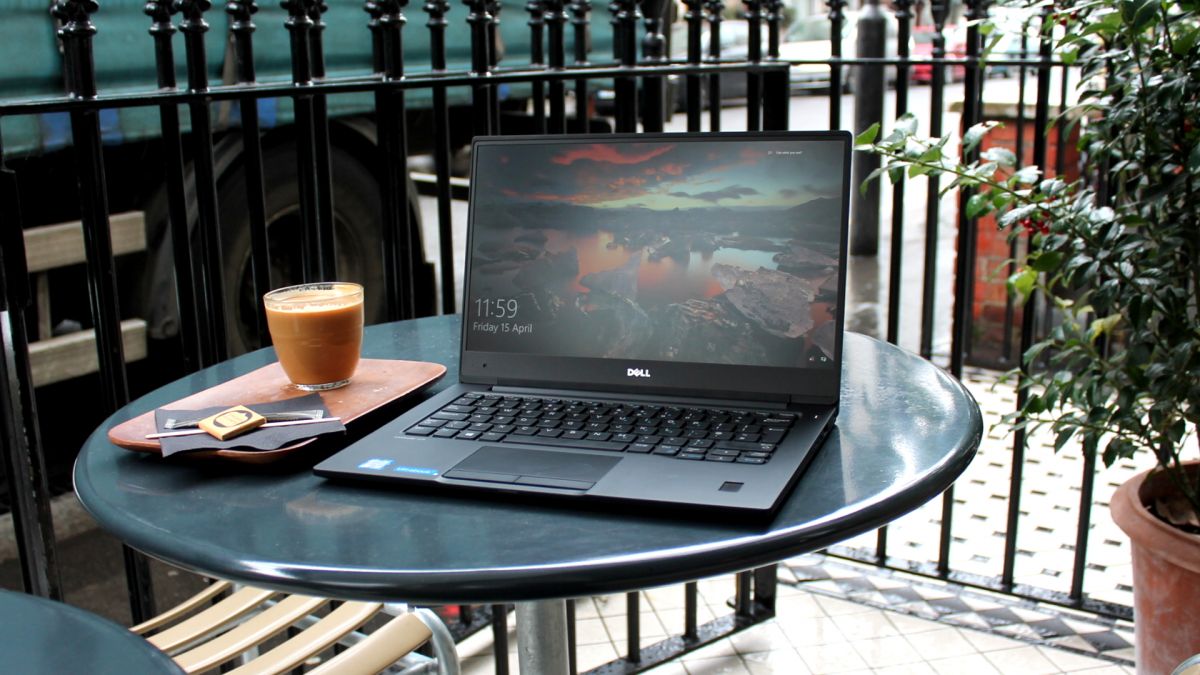
Introduction and design
Is the XPS 13 still king of the ultraportables? I would say so, as few machines have given Dell’s compact laptop much to think about since it set the standard for design last year.
Featuring a near-bezel-less 13.3-inch InfinityEdge display, the XPS 13 has the dimensions of an 11-inch laptop. A win for both productivity and portability, the innovative display tech has since been ported over to Dell’s revamped XPS 12 and XPS 15 devices. Even the company’s OLED monitors are getting in on the game.
As its competitors play catch-up (see HP’s Spectre 13 and the equally alluring MacBook), Dell is now looking to replicate the XPS 13’s success in the business space with the Latitude 13 7370.

The first enterprise-focused laptop to sport an InfinityEdge display, it arrives with a number of work-friendly features in tow. It’s tempting to think of the Latitude as a productivity-focused XPS 13, but such a comparison is a little too simplistic.
The Latitude’s keyboard is superior, but it features a weaker Core M processor on the inside. It’s also around £410 ($580/AUS$756) more expensive. While you could pick one up and use it for non-business purposes, it’s worth taking extra time to consider whether the similar yet cheaper XPS 13 is better suited to your needs.
Design
The XPS 13 is hardly flamboyant in design, and the Latitude 13 7370 is even more demure. Featuring a sensible blend of materials and colors to appeal to its business audience, the laptop is clad in various stealthy shades of silver, grey and black. If James Bond quit his job as a super-sleuth to become a salesman, this is the lightweight machine he would take on the road.
I couldn’t find a trace of flex no matter how hard I pressed down on the Latitude’s soft-to-touch carbon fibre body. Most premium laptops makers claim that their systems are built from military grade stuff, but when Dell says that the 13 7370 has passed the MIL-SPEC 810 test I’m not tempted to question it.
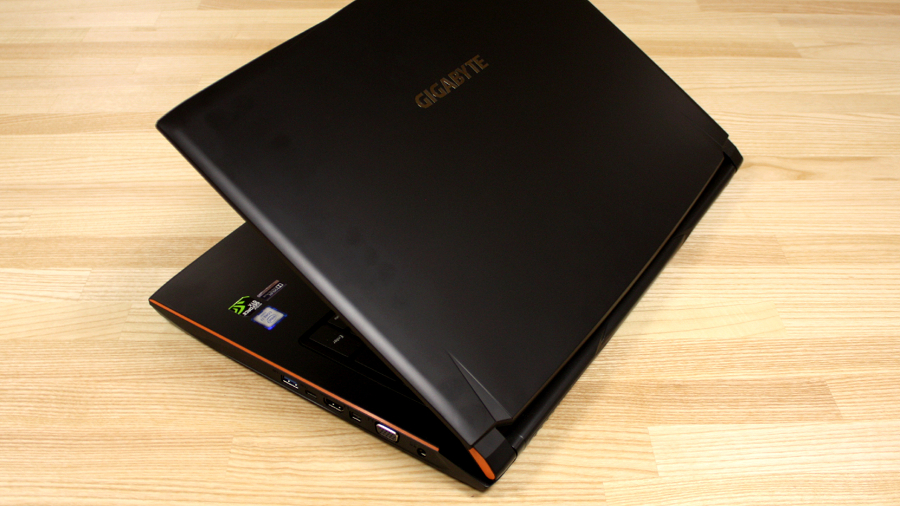
The Latitude 13 7370’s aluminium CNC-machined lid is held by a hinge that stretches the full length of the laptop’s body and barely wobbles once positioned. It’s a darker shade of silver than the one on the XPS 13 lending it a moodier appearance. The lid rotates 180 degrees to fold completely flat, which comes in handy if you’re using an external monitor and aren’t using the laptop’s screen as a second display.
On the underside Dell has swapped the XPS 13’s silver finish for a matte black one, removing the ‘sandwich’ visual effect. Other differences between the two systems are relatively minor: the lettering on Latitude’s keys has been shifted to the top-left position to allow room for a makeshift numberpad that’s positioned in an inverted triangle on the right-hand side of the keyboard. It’s an innovative layout and one that I’d like to see replicated on other laptops.
Below the trackpad are clicky left and right buttons which are tactile and responsive. Their existence makes the base slightly longer than the XPS 13’s, which I found only makes typing more comfortable. Dell has squeezed in Page up and Page Down keys above the arrows keys on the right-hand side of the keyboard, leaving a packed layout that utilizes every inch of space.
Specifications and value
Like the XPS 13, the Latitude 13 7370 is no space hogger. Though a little thicker and wider, it remains far more portable than other laptops with 13.3-inch displays, XPS aside.
The Latitude measures 12.22 x 8.47 x 0.74 inches or 310 x 215 x 19mm (W x D x H). In comparison, the XPS 13 measures 11.9 x 7.87 x 0.59 inches (302 x 199 x 14.9mm). The Lenovo Yoga 260, another comparable laptop that comes with a 1080p display, enterprise features and a comfortable keyboard, measures 12.2 x 8.6 x 0.7 inches (310 x 220 x 17.8mm).
Tipping the scales at a light 2.77 pounds (1.2kg), the Latitude is barely lighter than the the XPS 13 (2.8 pounds/1.27kg) and beats the Yoga 260’s 2.9 pounds (1.3kg). The weight difference between the three laptops is so small that you would barely notice the difference when slung into a backpack.
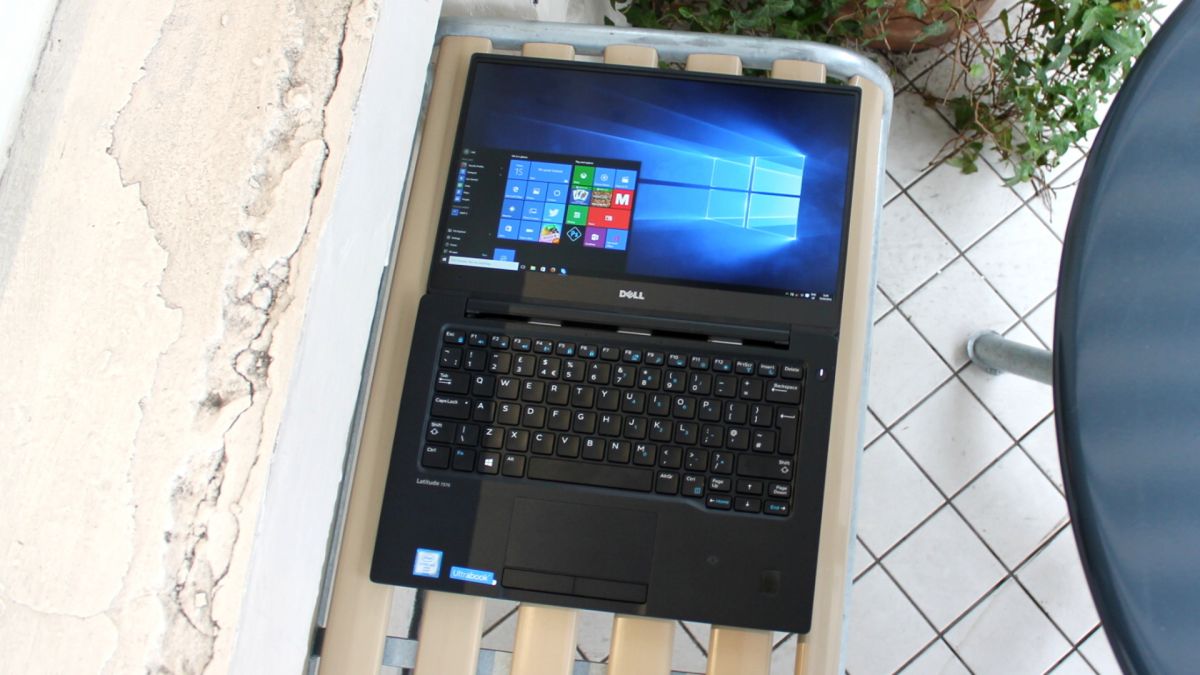
Spec sheet
Here are the specifications of the Latitude 13 7370 provided to techradar for revew:
- CPU: 1.10GHz Intel Core m5-6Y57 (dual-core, 4MB cache, up to 1.51GHz with Turbo Boost)
- Graphics: Intel HD Graphics 515
- RAM: 8GB LPDDR3 (1,866MHz)
- Screen: 13.3-inch FHD (1,920 x 1,080) InfinityEdge display
- Storage: 256GB PCIe SSD
- Ports: 1 x USB 3.0 (Type A), 2 x Thunderbolt (Type C), 1 x Micro HDMI, Universal Jack, Kensington Security Slot,
- Connectivity: Intel Dual-Band Wireless-AC 8260 Wi-Fi + BT 4.1 Wireless Card (2×2), Intel Tri-Band
- Wireless-AC 18260 WiGig + Wi-Fi + BT4.1 Wireless Card
- Camera: 720p widescreen HD webcam with dual array digital microphones
- Weight: 2.47 pounds (1.12kg)
- Size: 12 x 21 x 1.4 inches (W x D x H) (304 x 210 x 14 mm)
The first sign that the Latitude 13 7370 is a business device is the price. In the US, the base Latitude 13 7370 comes outfitted with a lowly 1,366 x 768 pixel-resolution display for $1,299 (around £880 or AUS$1,785). Avoid it. In the UK, the entry-level configuration features a 1080p display for £1,367 (around $1,689 or AUS$2,553). In the Lenovo camp, the Yoga 260 starts at £1,009 (around $1,294 or AUS$1,679) for the version with the 1080p display.
As mentioned, the Latitude is powered by Intel’s Core m3, m5 and m7 processors rather than the Core i chips that feature in both the XPS 13 and the Yoga 260. I find the decision a little puzzling, not least because it shows that Dell reckons business users don’t need the added performance. I’d hold up heavy spreadsheet work, the need to multi-task and run a vast range of legacy programs as reasons to argue the opposite. Core M in a wafer-thin MacBook, a value-focused laptop like the Asus UX305, or a tablet such as the Galaxy Tab Pro S is expected, but here?
Like the XPS 13, the Latitude 13 7370 can be equipped with a QHD+ display. However, this is only available on the top-end configuration that starts at £1,641 (around $2,363 or AUS$3,064) and comes with an Intel Core m7 CPU, 256GB SSD and 8GB of main memory.
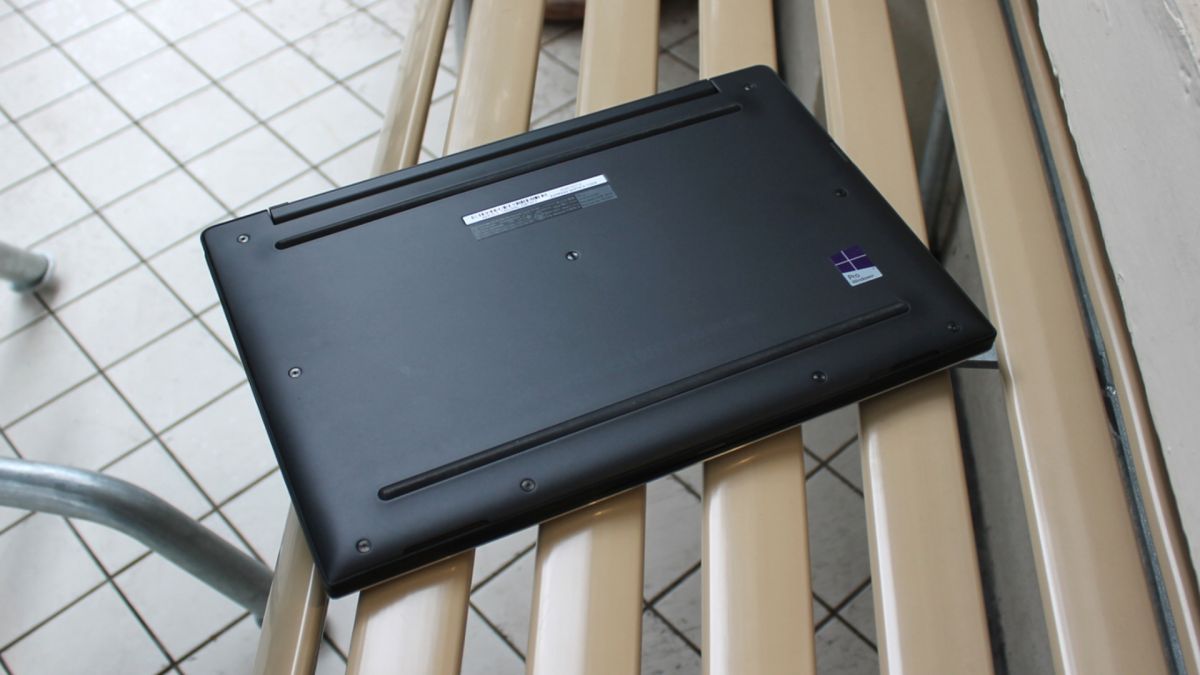
The various connectivity options are where the Latitude 13 7370 begins to justify its price tag. Along the right-hand edge is a micro SIM card slot, micro HDMI port and optional SmartCard Reader. On the machine’s left-hand side is a power connector and traditional USB 3.0 (Type A) port.
There’s also two Thunderbolt 2 USB-C ports that carry data transfer speeds of up to 40Gbps and can be used to charge the machine. They also allow you to connect the laptop to a block-shaped dock used to hook up two external 4K monitors.
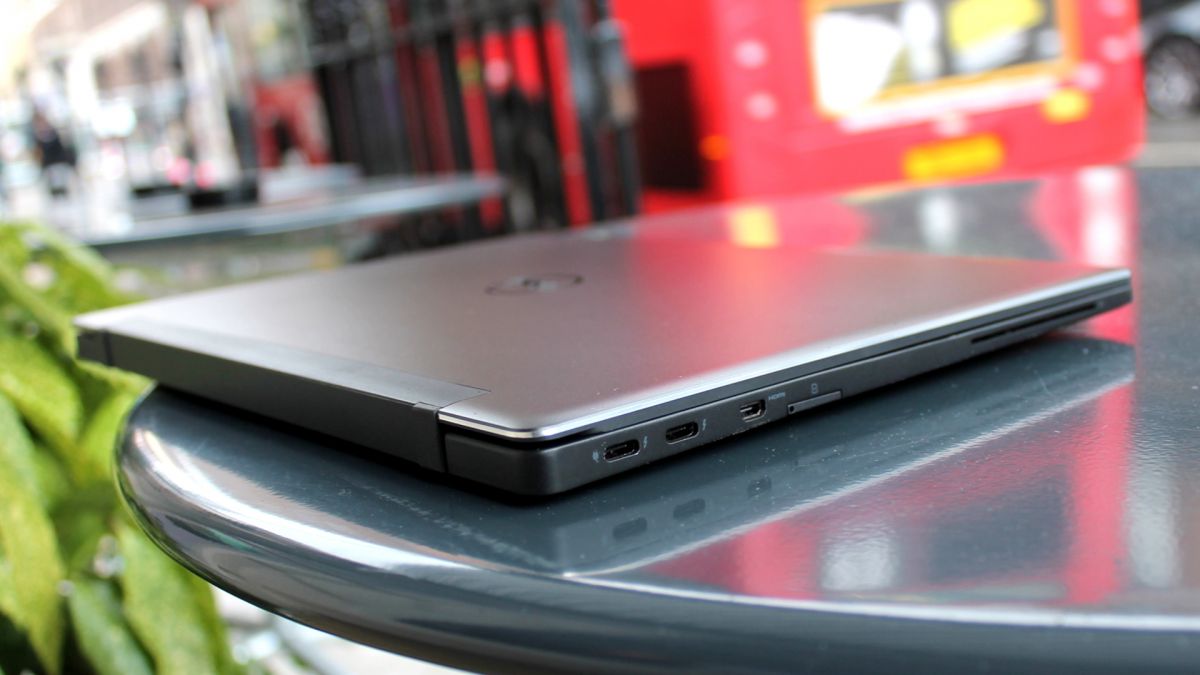
Dell has also made two battery options available and you’ll be able to customize your 12.5-inch notebook with either a three or four cell battery.
Security options are identical whichever configuration is ordered. They include a TPM (Trusted Platform Module), optional touch fingerprint reader, contracted FIPS 201 Smartcard reader, contactless smart card reader, Dell control vaultTM 2.0 and optional Computrace theft recovery software.
Performance and features
Speed isn’t an issue most of the time when using the Latitude 13 7370. Despite not being a top-of-the-line processor, the Core m5 chip and 8GB of RAM under the hood keeps things running smoothly. With my usual suite of office apps open in the background including GIMP, FileZila FTP, Skype, Evernote, Wunderlist and Spotify, only Firefox – a notorious stutterer – began to freeze when I started loading tabs into a third browser window.
Refreshingly, Intel’s display driver didn’t crash once during my three weeks with the machine. Unlike the Dell XPS 15 and XPS 12 I tested, which gave me a frozen black desktop at least a few times a day, the Latitude played nicely with the firmware and drivers that came pre-installed on the machine. Whether it’s on Dell’s side or Windows 10’s side, something has changed for the better in the past few months.
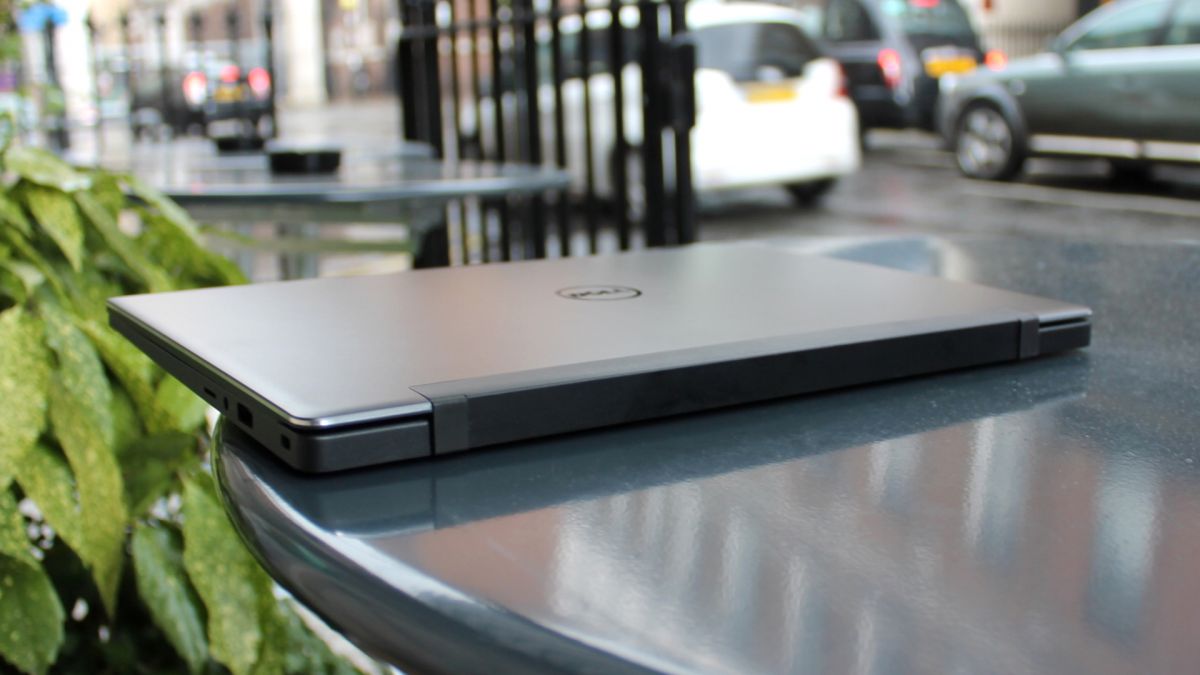
Benchmarks
Here’s how the Latitude 13 7370 performed in our suite of benchmark tests:
- Cinebench CPU: 152 points; Graphics: 23 fps,
- GeekBench: 2,394 (single-core); 3,914 (multi-core)
- PCMark 8 Home: 1,867
- PCMark 8 Battery Life: 5 hours 14 minutes (50% screen brightness)
- 1080p looping video in VLC (50% brightness, 50% volume): 5 hours and 20 minutes
The Latitude may be competent when it comes to running basic computing tasks, but so it should be for a laptop that starts at just over £1,600 when configured with a QHD+ display. Bear in mind that the Asus UX305, which is thinner than the Latitude and features a Core m3 processor, 8GB of memory and a QHD+ display, can currently be bought online for just £549.99 (around $794 or AUS$1,032).
When it comes to processor-intensive tasks, such as transcoding video and resizing high-resolution images, in most cases the Latitude isn’t going to be as suitable as a laptop with a Core i-series chip. Compared to the XPS 13 (configured with a Core i5 chip), it scored 61% lower in Cinebench’s CPU test and 20% lower in PCMark8’s Home Test, which runs a number of benchmarks to simulate every usage.
Here’s an interesting comparison: you can pick up a full-loaded top-end Yoga 260 with an Intel Core i7 processor, 512GB SSD and 8GB of main memory for around £50/$75/$99 less than the entry-level Latitude 13 7370.

As I found in my review of that configuration, in comparison, Lenovo’s machine scored 57% higher in Cinebench’s CPU benchmark, 54% higher in PCMark8’s home test and 45% higher in Geekbench’s Multi CPU test. If you can cope with a slightly less colorful display and a little more chunk in the chassis, the Yoga is the obvious choice for power-hungry business users.
What reflections?
There are two choices of resolution when it comes to the Latitude’s display: 1080p (or Full HD) and QHD+. Full HD remains the best choice to balance batter life and pixel density on a 13-inch laptop, and Dell has ensured that what the Latitude’s 13 7370 lacks in sharpness it makes up for in color saturation and brightness. There’s no touchscreen option on the 1080p version, so you’ll have to factor that into your choice if deciding between the two.
Its matte display offers wide viewing angles and its anti-glare coating means you won’t be bothered by reflections when using the laptop under bright conditions; it’s practically vampiric. Of course, if it’s defined lines, crisp fonts and sharp icons that you’re looking for, you’ll want to check out the QHD+ version; because even a decent 1080p display can’t keep them jaggied fonts at bay.

On the plus side, the combination of a 1080p display and Intel’s Core M processor helps battery life. With the bare minimum of programs running and the brightness lowered to 50%, the Latitude reported that 10 hours of life remained in the tank. Once you start opening a few programs, however, that number quickly dwindles. In a normal working day, expect to reach between five and seven hours away from the mains depending on the brightness level.
I’m a stickler for a comfortable keyboard when it comes to typing, whether it’s a mechanical gaming keyboard with Cherry MX Brown switches or Apple’s low-slung magic keyboard. The Latitude 13 7370 has the most comfortable keyboard I’ve ever used on a Windows laptop, its sturdy keys possessing a generous amount of travel. Slightly curved, they feel great to type on.

One of the first tasks I undertook with the laptop was to type up a 5,000-word transcript, a task that gave my fingers terrible cramp on the XPS 15. In addition to offering deeper travel, the Latitude’s keys feel softer, and more cushioned in comparison. If you’ve used the Dell XPS 12’s keyboard, the two keyboards are nearly identical.
My only criticism of the Latitude’s keys are that they’re slightly on the small side and would benefit from a larger surface area. If you’re making the transition from a MacBook, it may take you a short amount of time to become comfortable with the key size. Once you are, you’ll find that your fingers fly.
There is a trackpad that’s equally as good as the one on the XPS 15, which is one of the most impressive I’ve used on a Windows laptop. The Latitude’s isn’t quite as large, but it offers the benefit of being able to tap on it to execute a left or right click in addition to clicking the physical trackpad buttons underneath. There’s certainly enough room to execute Windows 10’s various gestures.
A common problem among Dell’s XPS devices, the positioning of the webcam is a particular issue on the Latitude 13 7370. Located underneath the screen in the left-hand corner, its low position makes it difficult to look anything other than a bit silly on conference calls. I had to balance the Latitude on an empty cardboard box for one call, which goes against the Latitude’s otherwise professional nature.
Final verdict
The Latitude 13 7370 is a unique business machine, which is reflected in the price tag. Like the XPS 13 it’s compact, light enough to carry anywhere and and stands up well to knocks and scrapes. You’ll have to pay extra for its enterprise features, however, whether you want them or not. If you’re a fan of slick design, the Latitude 13 7370 will be hard to resist even in the face of more affordable and powerful rivals.
We liked
With its InfinityEdge display, there’s no other business ultrabook quite as compact as the Latitude. It slips into a bag for easy transportation, and stands up well to knocks and scrapes. Its soft-touch interior contrasts well with the solid aluminium exterior, adding up a machine you can confidently take anywhere. Its keyboard is one of the best in the business (and in business), with keys that feature a perfect amount of travel – even if the keycaps are a little on the small side.
If you go for the 1080p version you’ll get the best combination of battery life and screen real-estate. With plenty of connectivity options including twin USB-C ports and double-digit hours of battery life on the go (if you stick to having one app open at a time with the brightness turned nearly all the way down), there’s enough juice to keep you going for a decent length of time.
We disliked
The Intel Core M processor inside is a confusing choice and muddies the Latitude’s value. Had it come with a Core i5 chip inside, its high cost would’ve made much more sense. As it stands, unless you really want its compact design and excellent keyboard, there are other laptops out there that aren’t far off – such as the Yoga 260 – that carry Core i7 chips and are around 50% more powerful for the same price.
There being no touchscreen is either a good or bad thing depending on your view. If you’ve got used to using one then its omission will come as a disappointment, but on the other hand its absence helps keep weight and cost down.
Final verdict
There’s no two ways about it: the Latitude 13 7370 lives up to the XPS 13’s excellent reputation and convincingly carries over its best traits into the business world. You can sling it into a bag, rough it up a bit, go for hours on the road with one under your arm and connect just about anything you like up to it.
Productivity comes easy thanks to its 1080p display and best-in-class keyboard. (For a Windows machine, anyway – the 13-inch MacBook Air’s keyboard is arguably the more comfortable of the two thanks to its larger keycaps.)
It’s disappointing then, that the Latitude is powered by a processor more accustomed to value (and fashion) laptops and tablets. It’s not like the Latitude is too thin to slip in full Core-series processors, which are already offered in the slimmer XPS 13. It results in an unnecessary compromise, and one that restricts the Latitude to being a fancy portable laptop designed for lightweight tasks rather than one that business users can depend on in any situation.
On the other hand, if you’re seeking a well-built, compact laptop that packs enterprise features and enough horsepower to surf the web, stream video and music and multi-task, the Latitude 13 7370 is in a (business) class of its own.
Source: techradar.com





































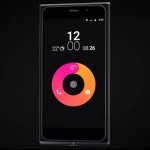




1366×768 for a $1300 laptop? WTF 1080p should be MINIMUM today. I remember Sony Vaio's around 8 years ago with resolutions in the 1080p range, maybe higher. I bought an ultrabook 2 years ago, and honestly I would never have considered anything with less than 1080p, and there was a couple of options with resolutions higher than that.
Every other media says it's equipped with core m, how is your core i?